Balkans

The Balkans is the historical name of a geographic region of southeastern Europe. The region takes its name from the Balkan Mountains, which run through the centre of Bulgaria into eastern Serbia. The region has a combined area of 550,000 km2 (212,000 sq mi) and a population of about 55 million people.
Balkan is an old Turkish word meaning "a chain of wooded mountains".[1] The ancient Greek name for the Balkan Peninsula was the "Peninsula of Haemus” (Χερσόνησος τοῦ Αἵμου, Chersónēsos tou Haímou).
Contents |
Definitions and boundaries
The Balkan Peninsula
]
The Balkans are adjoined by water on three sides: the Black Sea to the east and branches of the Mediterranean Sea to the south and west (including the Adriatic, Ionian, Aegean, and Marmara seas).
The Balkans
The identity of the Balkans is dominated by its geographical position; historically the area was known as a crossroads of various cultures. It has been a juncture between the Latin and Greek bodies of the Roman Empire, the destination of a massive influx of pagan Slavs, an area where Orthodox and Catholic Christianity met, as well as the meeting point between Islam and Christianity.
The Balkans today is a very diverse ethno-linguistic region, being home to multiple Slavic, Romance, and Turkic languages, as well as Greek, Albanian and others. Through its history many other ethnic groups with their own languages lived in the area, among them Thracians, Illyrians, Romans, Pechenegs, Cumans, Avars, Celts, Germans and various Germanic tribes.
Possibly the historical event that left the biggest mark on the collective memories of the peoples of the Balkans was the expansion and later fall of the Ottoman Empire. Many people in the Balkans and Carpathians place their greatest folk heroes in the era of either the onslaught or the retreat of the Ottoman Empire. For Croats Nikola Šubić Zrinski and Petar Kružić, for Serbs Miloš Obilić and Tzar Lazar, for Albanians Skanderbeg, for ethnic Macedonians Nikola Karev, for Bosniaks Husein Gradaščević and for Bulgarians Vasil Levski.
Following the collapse of the Warsaw Pact and the breakup of Yugoslavia, most Balkan states have acceded to the European Union, or are in the process of doing so.
Etymology and evolving meaning
The region takes its name from the Balkan mountain range in Bulgaria (from the Turkish balkan meaning "a chain of wooded mountains").[2] The name is still preserved in Central Asia where there exist the Balkan Mountains[3] and the Balkan Province of Turkmenistan. On a larger scale, one long continuous chain of mountains crosses the region in the form of a reversed letter S, from the Carpathians south to the Balkan range proper, before it marches away east into Anatolian Turkey. On the west coast, an offshoot of the Dinaric Alps follows the coast south through Dalmatia and Albania, crosses Greece and continues into the sea in the form of various islands. The word was based on Turkish balakan 'stone, cliff', which confirms the pure 'technical' meaning of the term. The mountain range that runs across Bulgaria from west to east (Stara Planina) is still commonly known as the Balkan Mountains.
The first time the name "Balkan" was used in the West for the mountain range in Bulgaria was in a letter by Buonaccorsi Callimarco, an Italian humanist, writer and diplomat in 1490. An English traveler, John Morritt, introduced this term into the English literature at the end of the 18th century, and other authors started applying the name to the wider area between the Adriatic and the Black Sea. The concept of the “Balkan peninsula” was created by the German geographer August Zeune in 1808.[4] As time passed, the term gradually obtained political connotations far from its initial geographic meaning, arising from political changes from the late 1800s to the creation of post-World War I Yugoslavia (initially the Kingdom of Serbs, Croats and Slovenes). Zeune's goal was to have a geographical parallel term to the Italic and Iberian Peninsula, and seemingly nothing more. The gradually acquired political connotations are newer, and, to a large extent, due to oscillating political circumstances. The term Balkans is generally used to describe areas that remained under Turkish rule after 1699, namely: Bulgaria, Serbia (except for Vojvodina), Macedonia, Thrace, Albania, Epirus, Bosnia and Herzegovina, Montenegro (except for the Boka Bay and Budva), central Greece and the Peloponnese. Vojvodina and Transylvania, it is argued, do not belong to Balkans. After the split of Yugoslavia beginning in June 1991, the term 'Balkans' again received a negative meaning, even in casual usage (see Balkanization). Over the last decade, in the wake of the former Yugoslav split, Slovenes have rejected their former label as 'Balkan nations'. This is in part due to the pejorative connotation of the term 'Balkans' in the 1990s, and continuation of this meaning until now. Today, the term 'Southeast Europe' is preferred or, in the case of Slovenia and Croatia, 'Central Europe'.
Southeastern Europe
Due to the connotations of the term 'Balkan' mentioned above, many people prefer the term Southeastern Europe instead. For the first time this term was used in 1941 for the political needs of Adolf Hitler and the Nazi leadership of the Third Reich. The use of this term is slowly growing; a European Union initiative of 1999 is called the Stability Pact for South Eastern Europe, and the online newspaper Balkan Times renamed itself Southeast European Times in 2003.
The use of this term to mean the Balkan peninsula (and only that) technically ignores the geographical presence of northern Romania, Moldova, Ukraine, Bulgaria and Ciscaucasus, which are also located in the southeastern part of the European continent.
Western Balkans
European Union institutions and member states define the "Western Balkans" as Albania and the constituent republics of the former Yugoslavia, minus Slovenia.[5] The European Bank for Reconstruction and Development uses "Western Balkans" to refer to the above states, minus Croatia.[6][7][6][7]
Ambiguities and controversies
The northern border of the Balkan peninsula is usually considered to be the line formed by the Danube, Sava and Kupa rivers and a segment connecting the spring of the Kupa with the Kvarner Bay.
Some other definitions of the northern border of the Balkans have been proposed:
- the line Danube - Sava - Krka River - Postojnska Vrata - Vipava River - Soča
- the line Danube - Sava - Ljubljansko Polje - Idrijca - Soča
- the line Dniester - Timişoara - Zagreb - Triglav
- the line Trieste - Odessa (Trieste-Odessa line)[8]
- the line Bay of Trieste - Ljubljana - Sava - Danube[9]

The most commonly used Danube-Sava-Kupa northern boundary is arbitrarily set as to the physiographical characteristics, however it can be easily recognized on the map. It has a historical and cultural substantiation. The region so defined (excluding Montenegro, Dalmatia, and the Ionian Islands) constituted most of the European territory of the Ottoman Empire from the late 15th to the 19th century. Kupa forms a natural boundary between south-eastern Slovenia and Croatia and has been a political frontier since the 12th century, separating Carniola (belonging to Austria) from Croatia (belonging to Hungary).
The Danube-Sava-Krka-Postojnska Vrata-Vipava-Isonzo line ignores some historical and cultural characteristics, but can be seen as a rational delimitation of the Balkan peninsula from a geographical point of view. It assigns all the Karstic and Dinaric area to the Balkan region. The other separation is Danube-Sava-Una, which is a natural border between Croatia, and Serbia and Bosnia-Herzegovnia.
The Sava bisects Croatia and Serbia and the Danube, which is the second largest European river (after Volga), forms a natural boundary between both Bulgaria and Serbia and Romania. North of that line lies the Pannonian plain and (in the case of Romania) the Carpathian mountains.
Although Romania (with the exception of Dobrudja) is not geographically a part of the Balkans, it is often included in the Balkans in public discourse.
The northern boundary of the Balkan peninsula can also be drawn otherwise, in which case at least a part of Slovenia and a small part of Italy (Province of Trieste) may be included in the Balkans.
Croatia is located by half in the Balkan Peninsula and it is generally included to the Balkan states.
Slovenia is also sometimes regarded as a Balkan country due to its association with the former Yugoslavia. When the Balkans are described as a twentieth-century geopolitical region, the whole Yugoslavia is included (in which case Slovenia, Croatia and Vojvodina would also be considered Balkan).
Current common definition
In most of the English-speaking, western world, the countries commonly included in the Balkan region are:[10][11][12][13][14][15]
 Albania
Albania Bosnia and Herzegovina
Bosnia and Herzegovina Bulgaria
Bulgaria Croatia
Croatia Greece
Greece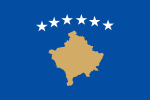 Kosovo (Independence from Serbia is disputed)
Kosovo (Independence from Serbia is disputed) Macedonia
Macedonia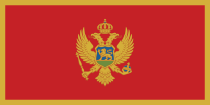 Montenegro
Montenegro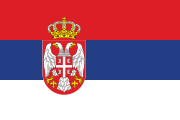 Serbia
Serbia
Related countries
Some other countries are sometimes included in the list as well:
Other countries not included in the Balkan region that are close to it and/or play or have played an important role in the region's geopolitics, culture and history:
 Austria (see also Austria-Hungary, Assassination in Sarajevo)
Austria (see also Austria-Hungary, Assassination in Sarajevo) Cyprus
Cyprus Hungary (see also Austria-Hungary)
Hungary (see also Austria-Hungary) Italy (see Trieste and History of the Venetian Republic)
Italy (see Trieste and History of the Venetian Republic)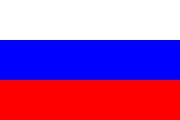 Russia (see History of Serbia)
Russia (see History of Serbia)
Regional organizations

Southeast European Cooperation Process (SEECP) member states
|

Stability Pact for South Eastern Europe members observers supporting partners
|

Central European Free Trade Agreement (CEFTA) members former members, joined the EU
|
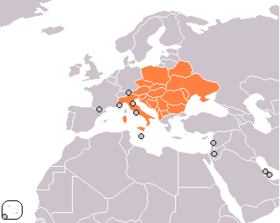
Central European Initiative (CEI) member states
|

Southeast European Cooperative Initiative (SECI) members observers
|

Black Sea Economic Cooperation (BSEC) members observers
|
See also the Black Sea Regional organizations
Nature and natural resources

Most of the area is covered by mountain ranges running from north-west to south-east. The main ranges are the Dinaric Alps in Slovenia, Croatia and Bosnia, the Šar massif which spreads from Albania to Republic of Macedonia and the Pindus range, spanning from southern Albania into central Greece. In Bulgaria there are ranges running from east to west: the Balkan mountains and the Rhodope mountains at the border with Greece. The highest mountain of the region is Musala in Bulgaria at 2925 m, with Mount Olympus in Greece, the throne of Zeus, being second at 2919 m and Vihren in Bulgaria being the third at 2914.
On the coasts the climate is Mediterranean, in the inland it is moderate continental. In the northern part of the peninsula and on the mountains, winters are frosty and snowy, while summers are hot and dry. In the southern part winters are milder.
During the centuries many woods have been cut down and replaced with bush and brush. In the southern part and on the coast there is evergreen vegetation. In the inland there are woods typical of Central Europe (oak and beech, and in the mountains, spruce, fir and pine). The tree line in the mountains lies at the height of 1800–2300 m.
The soils are generally poor, except on the plains where areas with natural grass, fertile soils and warm summers provide an opportunity for tillage. Elsewhere, land cultivation is mostly unsuccessful because of the mountains, hot summers and poor soils, although certain cultures such as olives and grapes flourish.
Resources of energy are scarce. There are some deposits of coal, especially in Romania, Bulgaria, Serbia and Bosnia. Lignite deposits are widespread in Greece. Petroleum is most notably present in Romania, although scarce reserves exist in Greece, Serbia, Albania and Croatia. Natural gas deposits are scarce. Hydropower stations are largely used in energetics.
Metal ores are more usual than other raw materials. Iron ore is rare but in some countries there is a considerable amount of copper, zinc, tin, chromite, manganese, magnesite and bauxite. Some metals are exported.
History and geopolitical significance


The Balkan region was the first area of Europe to experience the arrival of farming cultures in the Neolithic era. The practices of growing grain and raising livestock arrived in the Balkans from the Fertile Crescent by way of Anatolia, and spread west and north into Pannonia and Central Europe.
In pre-classical and classical antiquity, this region was home to Greeks, Illyrians, Paeonians, Thracians, Dacians and other ancient groups. Later the Roman Empire conquered most of the region and spread Roman culture and the Latin language but significant parts still remained under classical Greek influence. During the Middle Ages, the Balkans became the stage for a series of wars between the Byzantine, Bulgarian and Serbian Empires.
By the end of the 16th century, the Ottoman Empire became the controlling force in the region, although it was centered around Anatolia. In the past 550 years, because of the frequent Ottoman wars in Europe fought in and around the Balkans, and the comparative Ottoman isolation from the mainstream of economic advance (reflecting the shift of Europe's commercial and political centre of gravity towards the Atlantic), the Balkans has been the least developed part of Europe.
The Balkan nations began to regain their independence in the 19th century (Greece, Serbia, Bulgaria, Montenegro), and in 1912–1913 a Balkan League reduced Turkey's territory to its present extent in the Balkan Wars. The First World War was sparked in 1914 by the assassination in Sarajevo (the capital of Bosnia and Herzegovina) of the Archduke Franz Ferdinand of Austria. The Ottoman empire was one of the three most important parties of the Central powers. An important contribution towards the entente victory took place in the region, after Greece joined the war in 1917, which the capitulation of Bulgaria and the Ottoman empire, which led to the swift capitulation of Austria-Hangury.
The Greek success against the Axis forces during World War II, and the subsequent Albanian, Greek and Serb resistance, changed the course of the war and gave the allies a decisive step towards victory. After the Second World War, the Soviet Union and communism played a very important role in the Balkans. During the Cold War, most of the countries in the Balkans were ruled by Soviet-supported communist governments. Greece remained the only non Soviet country, but was also the only country in Europe to which the cold war turned 'hot' due to the Greek Civil War.
However, despite being under communist governments, Yugoslavia (1948) and Albania (1961) fell out with the Soviet Union. Yugoslavia, led by marshal Josip Broz Tito (1892–1980), first propped up then rejected the idea of merging with Bulgaria, and instead sought closer relations with the West, later even joining many third world countries in the Non-Aligned Movement. Albania on the other hand gravitated toward Communist China, later adopting an isolationist position.
The only non-communist countries were Greece and Turkey, which were (and still are) part of NATO.
In the 1990s, the region was gravely affected by armed conflict in the former Yugoslav republics, resulting in intervention by NATO forces in Bosnia and Herzegovina, Serbia, and the Republic of Macedonia. The status of Kosovo and ethnic Albanians in general is still mostly unresolved.
Balkan countries control the direct land routes between Western Europe and South West Asia (Asia Minor and the Middle East). Since 2000, all Balkan countries are friendly towards the EU and the USA.
Greece has been a member of the European Union since 1981; Slovenia and Cyprus since 2004. Bulgaria and Romania became members in 2007. In 2005 the European Union decided to start accession negotiations with candidate countries; Croatia, Turkey, and the Republic of Macedonia were accepted as candidates for European Union membership. As of 2004, Bulgaria, Romania and Slovenia are also members of NATO. Bosnia and Herzegovina and what was then Serbia and Montenegro started negotiations with the EU over the Stabilisation and Accession Agreements, although shortly after they started, negotiations with Serbia and Montenegro were suspended for lack of co-operation with the International Criminal Tribunal for the Former Yugoslavia.
All other countries have expressed a desire to join the EU but at some date in the future.
Population composition by nationality and religion
The region's principal nationalities include:
- Romanians (19.4 million)
- Greeks (10.3 million)
- Turks (10 million)
- Serbs (9 million)
- Bulgarians (7.5 million)
- Albanians (5.8 million)
- Croats (4.7 million)
- Bosniaks (2 million)
- Slovenes (2 million)
- Macedonians (1.4 million)
- Montenegrins (500,000)
- others (Roma, Jews)
The region's principal religions are Christianity (Eastern Orthodox and Roman Catholic) and Islam. A variety of different traditions of each faith are practiced, with each of the Eastern Orthodox countries having its own national church.
Eastern Orthodoxy is the principal religion in the following countries:
- Bulgaria (Bulgarian Orthodox Church)
- Greece (Church of Greece)
- Republic of Macedonia (Macedonian Orthodox Church)
- Montenegro (Serbian Orthodox Church)
- Romania (Romanian Orthodox Church)
- Serbia (Serbian Orthodox Church)
Roman Catholicism is the principal religion in the following countries:
- Croatia (87.83% Catholics (3 897 332); according to 2001 census official data)
- Slovenia (57.80% Catholics (1 135 626); according to 2002 census official data)
Islam is the principal religion in the following countries:
- Albania
- Bosnia and Herzegovina (relative/partial majority)
- Turkey
The following countries have significant minority religious groups of the following denominations:
- Albania: Orthodoxism, Catholicism.
- Bosnia and Herzegovina: Orthodoxism, Catholicism (Christianity is the largest religion here if including all sects)
- Bulgaria: Islam
- Croatia: Orthodoxism
- Republic of Macedonia: Islam
- Montenegro: Islam
- Serbia: Islam, Catholicism
- Romania: Catholicism, Protestantism
For more detailed information and a precise ethnic breakdown see articles about particular states:
- Demographics of Albania
- Demographics of Bosnia and Herzegovina
- Demographics of Bulgaria
- Demographics of Croatia
- Demographics of Greece
- Demographics of Kosovo
- Demographics of Montenegro
- Demographics of the Republic of Macedonia
- Demographics of Serbia
- Demographics of Slovenia
- Demographics of Turkey
Jewish communities of the Balkans
The Jewish communities of the Balkans are some of the oldest in Europe and date back to ancient times as well as having received a large influx of Sephardic Jews and later Ashkenazi Jews. In Slovenia, there were Jewish immigrants dating back to Roman times pre-dating the 6th Century settlement of the region by the Slavic peoples.[17] In Bosnia and Herzegovina, the Jewish communitiy is 90% Sephardic and Ladino is still spoken among the elderly. The Sephardi Jewish cemetery in Sarajevo is one of the most important Jewish burial grounds in Europe because of the shape of the tombstones and the ancient Ladino inscriptions on them.[18]
Notes
- ↑ ""Balkan."". Encarta World English Dictionary. Microsoft Corporation. Retrieved on 2008-03-31.
- ↑ ""Balkan."". Encarta World English Dictionary. Microsoft Corporation. Retrieved on 2008-03-31.
- ↑ ""Balkhan Mountains."". World Land Features Database. Land.WorldCityDB.com. Retrieved on 2008-03-31.
- ↑ Pavic, Silvia (2000-11-22). ""Some Thoughts About The Balkans."". About, Inc.. Retrieved on 2008-03-31.
- ↑ "Western Balkans: Enhancing the European Perspective". Communication from the Commission to the European Parliament and the Council (2008-03-05). Retrieved on 2008-04-08.
- ↑ 6.0 6.1 Marjola Xhunga (2006-05-21). "Western Balkans Initiative launched", European Bank for Reconstruction and Development. Retrieved on 2008-05-17.
- ↑ 7.0 7.1 http://www.ebrd.com/pubs/factsh/themes/wbalkans.pdf
- ↑ 562 (Salmonsens konversationsleksikon / Anden Udgave / Bind II: Arbejderhaver—Benzol)
- ↑ [Projekat Rastko] - Jovan Ilic - The Balkan Geopolitical Knot and the Serbian Question
- ↑ britannica.com - Balkans, comprising Slovenia, Croatia, Bosnia and Herzegovina, Serbia, Kosovo, Montenegro, Macedonia, Albania, Bulgaria, Romania, and Moldova.
- ↑ encarta.msn.com - commonly known as the Balkan states: Croatia, Bosnia and Herzegovina, the Former Yugoslav Republic of Macedonia, Serbia, Montenegro, Albania, Greece, and Bulgaria
- ↑ The Columbia Encyclopedia - The Balkan Peninsula therefore includes most of Slovenia, Croatia, and Serbia, and Bosnia and Herzegovina, Montenegro, Albania, Macedonia, continental Greece (including the Peloponnesus), Bulgaria, European Turkey, and SE Romania. These countries, successors to the Ottoman Empire, are called the Balkan States. Historically and politically the region extends north of this line to include all of Slovenia, Croatia, Serbia, and Romania.
- ↑ Croatia :: About Croatia
- ↑ http://www.britannica.com/eb/article-9113768/CROATIA
- ↑ http://www.britannica.com/eb/article-9112720/CROATIA
- ↑ Only the European section of it (traditionally called Rumelia or Eastern Thrace) is in the Balkans. ""Balkan Peninsula."". Microsoft Encarta Online Encyclopedia 2007. Microsoft Corporation. Retrieved on 2008-03-31.
- ↑ Jews of Yugoslavia 1941–1945 Victims of Genocide and Freedom Fighters, Jasa Romano
- ↑ http://www.eurojewcong.org/ejc/news.php?id_article=59 [Accessed July 15, 2008].
Sources
- Banac, Ivo (October 1992). "Historiography of the Countries of Eastern Europe: Yugoslavia" (fee required). American Historical Review (University of Chicago Press) 97 (4): 1084–1104. doi:. http://links.jstor.org/sici?sici=0002-8762(199210)97%3A4%3C1084%3AY%3E2.0.CO%3B2-O. Retrieved on 2008-06-19.
- Banac, Ivo (1984). The National Question in Yugoslavia: Origins, History, Politics. Ithaca, N.Y.: Cornell University Press. ISBN 978-0801494932.
- Carter, Francis W., ed. An Historical Geography of the Balkans Academic Press, 1977.
- Dvornik, Francis. The Slavs in European History and Civilization Rutgers University Press, 1962.
- Fine, John V. A., Jr. The Early Medieval Balkans: A Critical Survey from the Sixth to the Late Twelfth Century [1983]; The Late Medieval Balkans: A Critical Survey from the Late Twelfth Century to the Ottoman Conquest. Ann Arbor: University of Michigan Press, [1987].
- John R. Lampe and Marvin R. Jackson; Balkan Economic History, 1550–1950: From Imperial Borderlands to Developing Nations Indiana University Press, 1982
- Jelavich, Barbara (1983-07-29). History of the Balkans. Cambridge University Press.
- Jelavich, Charles and Jelavich, Barbara, eds. (1963). The Balkans In Transition: Essays on the Development of Balkan Life and Politics Since the Eighteenth Century. University of California Press.
- Király, Béla K., ed. East Central European Society in the Era of Revolutions, 1775–1856. 1984
- Komlos, John (1990-10-15). Economic Development in the Habsburg Monarchy and in the Successor States. East European Monographs #28. East European Monographs. ISBN 978-0880331777.
- Mazower, Mark (2000). The Balkans: A Short History. Modern Library Chronicles. New York: Random House. ISBN 0-679-64087-8.
- Stavrianos, L. S. (2000-05-01) [1958]. The Balkans since 1453. with Traian Stoianovich. New York: NYU Press. ISBN 978-0814797662.
- Stoianovich, Traian (September 1994). Balkan Worlds: The First and Last Europe. Sources and Studies in World History. New York: M.E. Sharpe. ISBN 978-1563240324.
- Kitsikis, Dimitri (2008). La montée du national-bolchevisme dans les Balkans. Le retour à la Serbie de 1830. Paris: Avatar.
See also
- History of the Balkans
- Historical regions of the Balkan Peninsula
- Balkan wars
- Balkan languages
- Balkan sprachbund
- Balkanization
- Balkan Insight
- Orient Express
- Music of Southeastern Europe
- The Islamization of Bosnia and Herzegovina
External links
- South-East Europe Review
- BalkanBaby travel writing, analysis and photos from the Balkans
- Balkan History by Steven W. Sowards
- SEEurope.net - news coverage on Southeastern Europe
- Southeast European Times
- The Centre for South East European Studies
- Balkans region: Oil and Gas Fact Sheet - United States Department of Energy Analysis Brief
- Balkans urged to curb trafficking - BBC
- News from Balkans
- Analysis from Balkans
|
||||||||||||||||||||
|
|||||
|
||||||||||||||||||||||||||||||||||||
